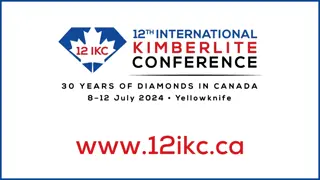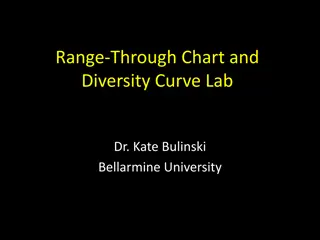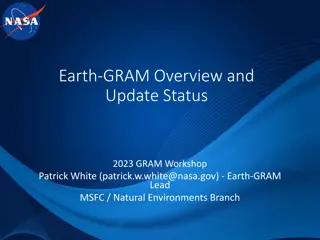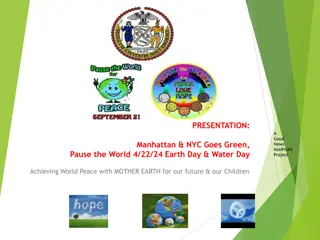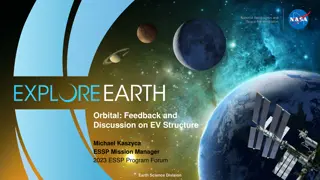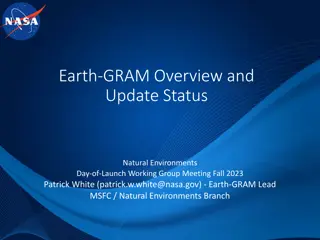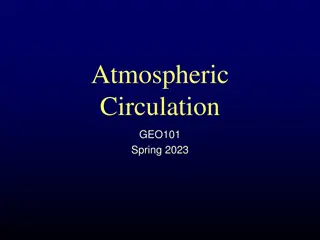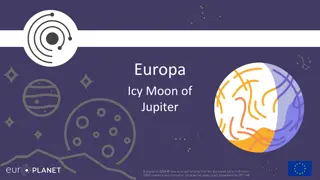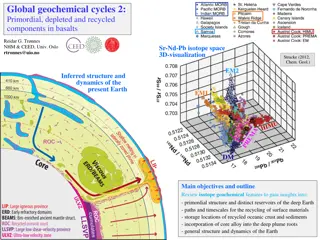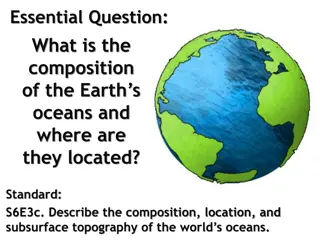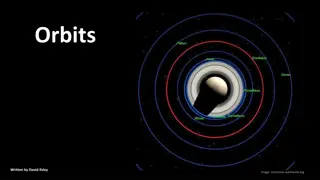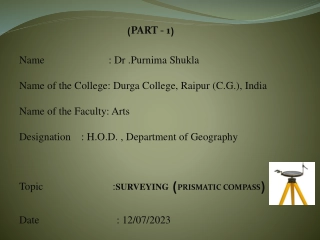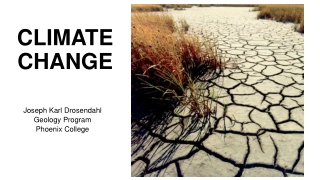Geology of the Earth
The evolution of elements in the universe began with the Big Bang, leading to the formation of hydrogen, helium, and heavier elements through stellar processes like fusion and supernovae. Our solar system formed 4.5 billion years ago from a nebula containing a variety of elements. These elements play crucial roles in the formation and composition of celestial bodies.
Download Presentation
Please find below an Image/Link to download the presentation.
The content on the website is provided AS IS for your information and personal use only. It may not be sold, licensed, or shared on other websites without obtaining consent from the author. Download presentation by click this link. If you encounter any issues during the download, it is possible that the publisher has removed the file from their server.
Presentation Transcript
Geology of the Earth Written by David Ilsley Image: en.wikipedia.org
The big bang, 13.8 Ga ago, produced just four elements: Hydrogen about 75% by mass Helium about 25% Lithium about 0.000 000 01% Beryllium even less Image: needpix.com
For a few hundred million years, that was all there was. Then, maybe 13.5 Ga ago, gravity pulled the gas into clumps sufficiently to produce the first stars. Many of these stars were very big. They burned their hydrogen fuel quickly, producing more helium. When the hydrogen ran out, the helium burnt to carbon and oxygen, then they burnt to progressively heavier elements like neon, magnesium and silicon, and finally iron.
The energy produced by the fusion stopped the star from collapsing under its own gravity. But fusing iron to heavier elements doesn t produce any energy in fact it absorbs energy. So once the core of the star was mostly iron, it collapsed. Image: commons.Wikimedia.org
This produced a supernova which threw much of the mass of the star into the surrounding space and, at the same time, bombarded the ejected material with neutrons to form elements heavier than iron. Image: needpix.com
This ejected material, was then available to form new stars, but now with a whole range of elements in them. Further cycles of star formation and destruction produced, by 4.5 Ga ago, a universe with the following proportions of the elements. Image: commons.Wikimedia.org
Our solar system was born 4.5 Ga ago from a nebula, a cloud of gas and dust with about that composition. The most abundant elements are the ones in the red box. Mg N S Al Image: commons.Wikimedia.org
The Most Abundant Elements (the ones in the Red Box) H He O C Si Mg N Fe Ne
As the solar system formed from the cloud of gas and dust, these elements acted in different ways. Image: rawpixel.com
Magnesium and silicon react very readily with oxygen. These elements had combined into silicate minerals (rock) almost as soon as they were ejected from supernovas. The main minerals were: 90% green olivine 10% black pyroxene (MgO)2SiO2 MgOSiO2
After these elements were used up, the remaining oxygen reacted with hydrogen to produce water ice crystals (H2O). Carbon and nitrogen also reacted with hydrogen to form methane (CH4) and ammonia (NH3) ice crystals.
Iron reacts less readily with oxygen, so it remained as grains of metal.
These rock, ices and metal grains formed the dust component of the nebula from which the solar system formed. The helium and neon as well as the remaining hydrogen remained as gases. Image: rawpixel.com
Of course, other elements were present in the gas, ice, rock and metal phases in smaller amounts. In particular: argon in the gas phase calcium, sodium and aluminium in the rock phase nickel and sulphur in the metal phase Image: rawpixel.com
As the solar system formed, the sun condensed into a sphere and started to shine, and a rotating disc of gas and dust formed around it. This is called the proto-planetary disc. Image: jpl.nasa.gov
Close to the sun it was warm enough to vaporize the ices in the disc, leaving just the metal and rock dust. Further out, there were metal, rock and ice grains. Over a few million years, rock and ice grains started to stick together in lumps called planetissimals.
At first, it was electrostatic forces that held the particles together, but when they got big enough, gravity started to become more important and dust and other planetissimals were drawn towards the larger lumps from a considerable distance. Eventually, these lumps got to be the size of small planets. In the inner solar system these were made of metal and rock; in the outer solar system, they also contained ices. The ices would have been in larger quantities than the metal and rock.
Once these small planets had formed, they had enough gravity to attract the gases hydrogen, helium, neon and argon. In the outer parts of the solar system, the gases were cold enough to be captured by the growing planets. This gave rise to the gas giants made of metal, silicates, ices and gas. Image: commons.Wikimedia.org
In the inner parts of the solar system, three things prevented the accumulation of gases on the planets. Firstly, because they had no ice component, the planets in the inner solar system were smaller and so had less gravity. Secondly, because they received a lot more heat from the sun, the gases that did accumulate were hot enough to escape easily back into space. Thirdly, the solar wind from the newly shining sun would have blown much of the gas out of the inner solar system.
The planets that formed in the inner solar system were therefore smaller terrestrial planets made just of metal and silicates. They are Mercury, Venus, Earth and Mars. Image: pixabay.com
When the Earth first formed, the constituents were distributed fairly evenly through it. But, the falling of matter together to form the Earth released gravitational energy, which heated the Earth to the point that some of it started to melt. Metallic iron has a lower melting point than rock, so this melted first. Being denser than rock, the iron sank towards the centre of the Earth. This released more heat and accelerated the process until most or all of the Earth was molten.
The result was that the iron sank to form the core and the rock rose to form the mantle. This process is called differentiation . The word mantle means coat a covering for the core. Image: peakpx.com
At first the core was entirely liquid. Since then it has partly solidified. Now the inner part is solid, while the outer part is liquid. Heat and the Earth s rotation cause this liquid to convect. This movement carries charged particles around and these currents produce the Earth s magnetic field. This field protects the Earth from charged particles streaming out from the Sun in the solar wind. This protection makes life on Earth possible.
As the mantle solidified it crystallised into about: 90% olivine (MgO)2 SiO2 10% pyroxene MgO SiO2 1% feldspar (Ca,Na2)O Al2O3 (SiO2)2 A rock with this composition is called peridotite . Olivine is a pale green trans- lucent mineral; pyroxene is black and feldspar is whitish. Image: flickr.com
Technical Detail The pressure and temperature increase as you go down through the mantle. The rock composition remains the same, but the minerals change. Above 660 km depth, the main minerals are: Olivine (MgO)2 SiO2 Pyroxene MgO SiO2 From 660 km to 2600 km, the main minerals are: Periclase MgO Bridgmanite MgO SiO2 From 2600 km to 2800 km, the main minerals are: Periclase MgO Post-perovskite MgO SiO2
All of this happened around 4.5 Ga ago, in the first few million years of the solar system s existence. After it had solidified, the Earth still contained a lot of heat from its accretion and differentiation and was further heated by the energy given off as unstable isotopes underwent radioactive decay. The main radioactive isotopes were uranium, thorium and potassium.
This heat caused some of the minerals in the mantle to remain molten and to rise to the surface as basalt lava. Image: commons.wikimdia.org These lavas then solidified on the surface and eventually built up a layer of lighter rocks with more pyroxene and feldspar, leaving most of the olivine in the mantle.
Basalt Image: flickr.com
Thin section of basalt. The elongated grey minerals are feldspar, the rounded orange ones pyroxene, the green ones olivine and the black ones iron and titanium oxides. Image: commons.Wikimedia.org
This layer was the beginning of the crust. Image: jpl.nasa.gov
The heat also caused convection in the mantle. The thin layer of crust on the surface floated around on these convection currents, being separated in some places and squashed together and scrunched up in others. Image: eograph.org.uk Image: commons.Wikimedia.org
Where it got scrunched up, it got thicker and the base was pushed down deeper and it partly melted again. Once again the lighter parts melted and formed magma consisting mostly of feldspar and quartz (SiO2). These poured out as new lava or, more often, came up close to the surface, but then solidified under the ground to form granite.
Granite Image: flickr.com
The scrunched up crust tended to stick up above the ocean as mountain ranges. Weathering and erosion by rain caused these mountains to wear down, the debris being carried to the sea by rivers and laid down as sediments (like sandstone and mudstone) under the water.
Later, these sedimentary rocks would get folded Image: wallpaperflare.com and heated to form metamorphic rocks. Image: flickr.com
Nowadays, the crust under the continents consists mostly of a mixture of basalts, granites, sedimentary rocks and metamorphic rocks. This crust forms patches covering about one third of the Earth s surface. Image: picryl.com
These patches are still being carried around by the convection currents in the mantle. Over hundreds of millions of years, the patches crash into one another to form larger masses, then later, get split apart again. Image: commons.wikimedia.org
The patch of continental crust that forms Australia and New Guinea split away from Antarctica about 50 million years ago and is currently heading north, scraping past SE Asia at about 5 cm/year. Eventually, the two continents will collide, forming a large mountain range. Image: en.wikipedia.org
Continental crust now averages about 40 km thick. So it is still just a thin film on the top of the mantle which is about 3000 km thick. Image: lv.m.wikipedia.org
The oceans are where there is no continental crust. They are formed as continents move apart. Basalt lava pours out of the mantle where it is rising and forms a layer about 5 km thick. So the crust in the oceans is only about 5 km thick and is made mostly of basalt with some sediment on top near where rivers empty into the oceans. Image: commons.Wikimedia.org
This oceanic crust sinks back down into the mantle where the convection currents descend often on the margin of a continent like the west coast of South America. They usually sink under the continent at about 45 in a subduction zone. Image: en.wikipedia.org Heating of the basalt and sediment as they sink causes melting and this causes volcanoes on the adjacent edges of the continents, like in the Andes.
An area of continental and/or oceanic crust that moves around as a single unit is called a plate. Most of the world s earthquakes and volcanoes occur around the plate margins. Image: commons.Wikimedia.org
The End Image: Google Earth



